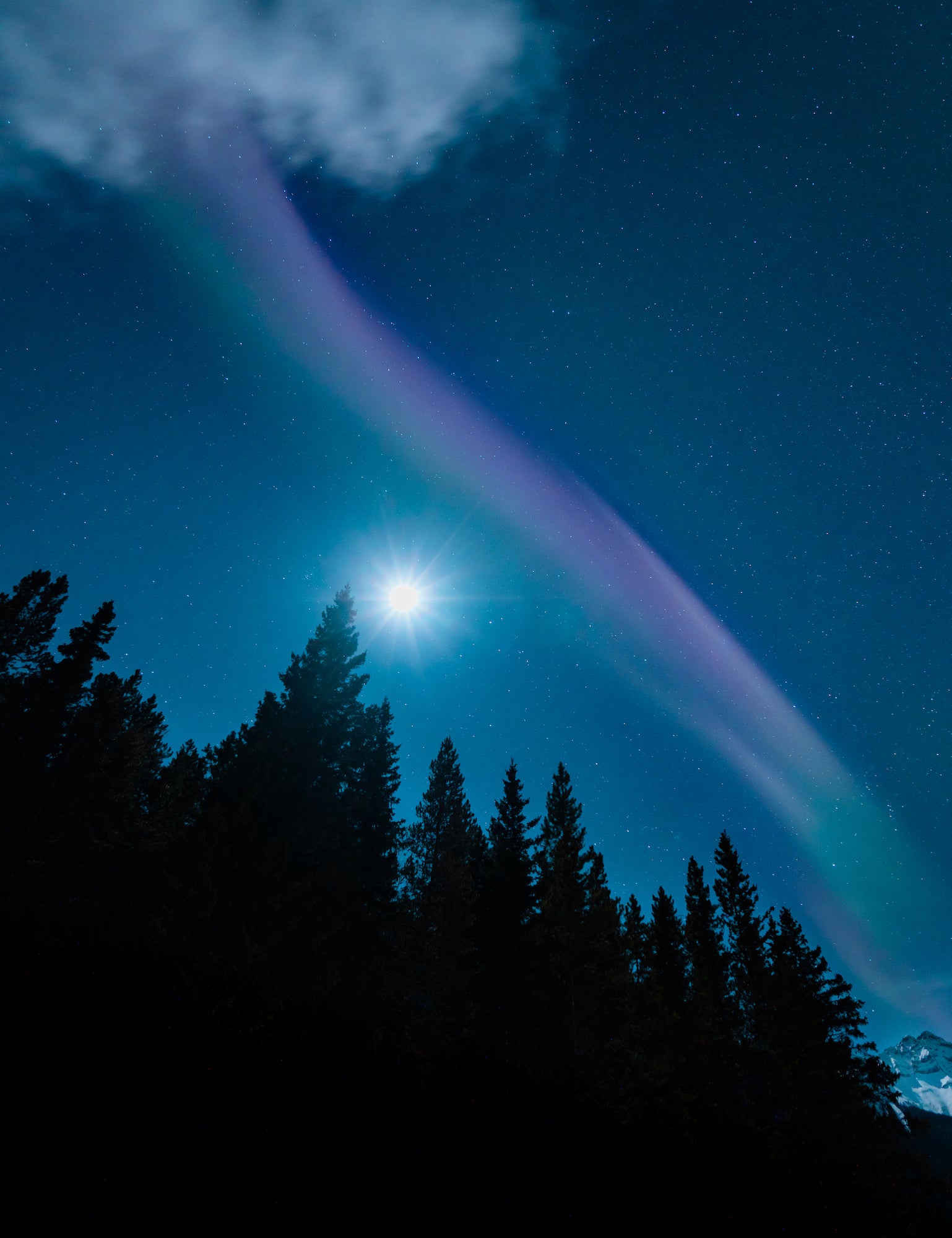Naomi Jane Atherton (@naomijaneatherton) is a travel and landscape photographer originally from Australia, now based in the heart of the Canadian Rockies. “It had been my dream to be based in this part of Canada since I was a child, and after spending time throughout parts of the US and British Columbia- I moved to the Canadian Rockies in January to be at close proximity to the world famous scenes we are lucky enough to have in our backyard.” We recently came across this stunning image on Instagram and sat down with Atherton to learn the story behind the shot. Keep reading below as she shares how she captured the atmospheric phenomenon known as STEVE.

Photo by Naomi Jane Atherton. Sone Alpha 7R III. Sony 16-35mm f/4. 20-sec., f/4, ISO 2000
Move over auroras, this photographer shares how she captured STEVE, one of the strangest and most colorful atmospheric dances in the sky.
Spotting A Rare Scene
Since my move, I had become increasingly more inspired by shooting night scenes and had turned almost nocturnal some nights- chasing clear nights or heading out at any chance of even a slight aurora spike. This particular evening I had been eyeing aurora data all day, unsure if we would have the right conditions. I had my camera bag packed by my door, the moment the data started to spike and I knew the skies were now dark enough- I hightailed out to drive slightly further north to Banff National Park. I vividly remember rolling down my car window in the cold as I drove, trying to peer out over the mountains and suddenly seeing the strangest formation of light. Initially, I couldn’t quite make out what I was seeing and perceived it as a strange cloud- but as I got closer to my location, I quickly realized what I was seeing was most definitely not a cloud. It was the elusive atmospheric phenomenon ‘STEVE’.

Photo by Pieter Stoffel with Naomi Jane Atherton's edits
Steve is a ‘Strong Thermal Emission Velocity Enhancement’ named by Alberta Aurora chasers in 2016 - stumping scientists for a number of years as it has the characteristics similar to those of typical auroras, yet is also uniquely different in how it forms. STEVE occurs when charged particles are heated up some 25,000km into the atmosphere, and further south than typical auroras.
I’d heard of this phenomenon in the past, but as I pulled up to Lake Minnewanka this evening I couldn’t fathom what I was actually seeing. A surreal ribbon of purple and green hues stretched across the skies of Banff in a rare display of cosmic radiation.
Selecting Gear for Storytelling
This shot was captured using my workhorse - the Sony Alpha 7R III, paired with the Sony 16-35mm f/4. I initially took a test shot on the Sony 35mm f/1.4 G Master prime for the low-light capabilities, but knew the framing was too tight for the scene and opted for the wider perspective. Though losing the lowlight capabilities, the versatility of the wide angle zoom allowed me to capture the scene whilst still being at close proximity to the tree-line, and also allowed me to show more of STEVE within the frame.
Embracing The Situation
With STEVE’s position in the sky, I immediately knew I wouldn’t get a mountain composition I was initially aiming for, and instead shifted focus to the silhouette of the trees opposite the lake-positioning the tripod to point straight up at the tree-line. I wanted to capture the expansive nature of STEVE’s shape within the sky, opting for a 17mm focal length. While you would usually avoid nights with strong moonlight when shooting astro scenes, this was a night where I had to embrace the glow from the moon in frame and use it within the shot. In this case, shooting at f/4 came in handy as I needed to capture the moon as more of a defined ‘starburst’ rather than a blown-out orb of light. Wanting to minimize noise, I kept my ISO no higher than 2000. With both the ISO and the strong light of the moon, a 20 second exposure was more than enough- and stayed within the ‘500 rule’ and ‘NPF Rule’ with my focal length to avoid star trails. (Editor's Note: Learn more about using the 500 rule for astrophotography HERE.)

Photo by Pieter Stoffel with Naomi Jane Atherton's edits
Honing In Through Editing
This image was post-processed entirely in Lightroom, and required very minimal editing. I immediately cooled down the white balance of the image (my preference for night scenes) and worked on popping the colors within STEVE’s ribbon- bringing out more of the vibrant purple and green I had seen in person. I used a radial filter to drop the shadows in the tree-line and define the silhouette, removing the distracting nature of some of the light reflecting off lower branches. With a small amount of noise reduction the image was ready to go, and continues to serve as one of my favorite shooting experiences - and one that has only made me hungry to continue chasing these elusive aurora scenes around the world.
See more of Naomi’s work at naomijanecreative.com and on Instagram @naomijaneatherton.



